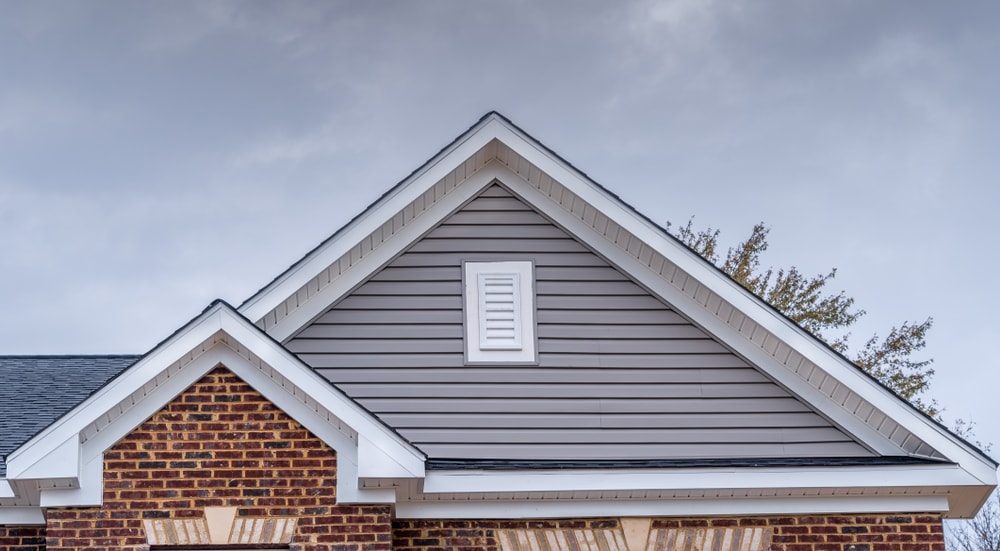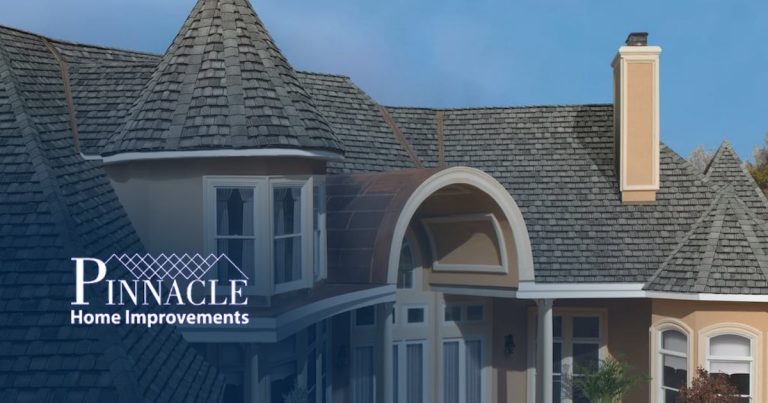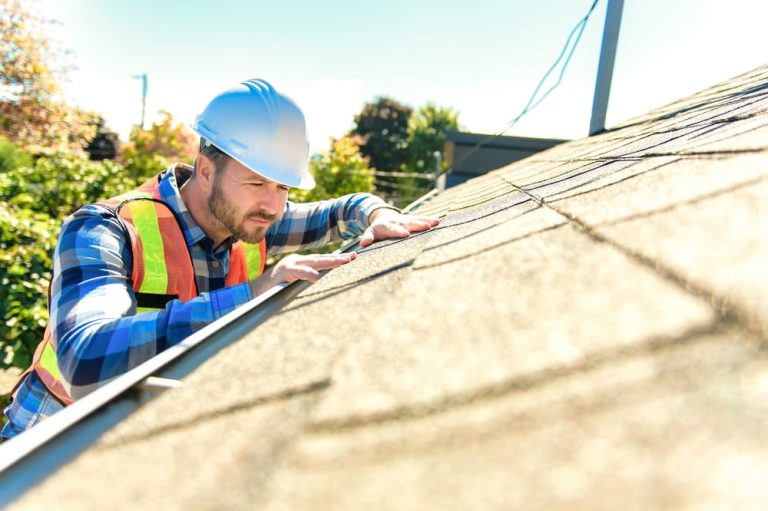Understanding what comprises a roof is one of the most important steps in managing your roof. Whether you are planning a full replacement, replacing parts of the roof, or simply want to learn more about how your roof works, knowing the correct names for roof parts can save time and avoid confusion. When you speak with a roofing contractor or receive estimates, the more familiar you are with roofing terminology, the smoother the experience becomes. That is why we created this roofing parts glossary. It is meant for homeowners who want to be informed and confident when making decisions about their roof system.
Why Roof Terminology Matters
Being able to name the parts of your roof is more than a nice-to-know skill. It helps when scheduling maintenance or inspections, and it makes conversations with your roofer more efficient. There are many common roofing terms that seem interchangeable but actually describe very different parts.
If a roof slope is misunderstood, or someone mixes up the underlayment with the roof deck, it could delay your project or lead to incorrect repairs. Learning these terms also helps you understand your insurance paperwork or estimate sheets better, especially when dealing with damage after a storm or natural wear and tear. Homeowners who understand the terminology of a roof also feel more confident trying small repairs on their own, as they know exactly what needs attention. Of course, with more extensive damage, you may need replacement service, which we can help you with at Pinnacle Home Improvements.
Surface Components of a Roof
The visible top part of your roof may seem simple, but it includes several materials and layers working together. One of the most well-known materials is asphalt shingles. These are commonly seen on homes across the country and are affordable and easy to install. Beneath the roofing, you will find a layer called the underlayment, which protects your roof deck from water. The deck is usually made from oriented strand board or sometimes exterior-grade plywood. This solid surface supports all the roofing materials applied above it.
At the roof edge, there is usually a drip edge. This thin piece of metal helps water run off smoothly and prevents moisture from reaching the fascia boards or interior structure. Along the peak of the roof is the ridge cap, which protects the meeting point of the sloping roof planes from rain or snow. Flashing is another important item that is made from galvanized steel or other metals. It seals around roof vents, chimneys, and places where two roof slopes intersect to stop leaks.
Roofing Structure Components
If you remove the shingles, underlayment, and roof covering, you will find the skeleton of your roof underneath. This includes parts like the rafters and trusses that give the sloped roof its shape and strength.
The roof structure relies heavily on the strength of these beams to hold up the entire roof deck and other roofing materials. At the ends of the rafters, the fascia board creates a clean edge and also helps support the roof and gutters.
Under the overhanging part of the roof, called the roof overhang, is the soffit. That section improves airflow into the attic space and helps prevent moisture buildup. Collar ties and ceiling joists are horizontal pieces that hold the rafters together and keep the roof from shifting. A valley is the place where two sloping roof planes meet, forming a channel for water to flow. Dormers are vertical structures that extend out from the main roof, often used to add windows or space to upper rooms.
Roof Shapes and Designs
There are many roof shapes used in residential construction. A gable roof is a popular design with two sloping roof planes that create a triangle shape at the end walls. Hip roofs slope down on all four sides and tend to be stable in windier areas.
A shed roof is a design with only one sloping plane. A mansard roof has four sides and a steep lower slope, often seen on more elaborate homes. Flat roofs are often used on commercial buildings or modern-style homes. Another classic design is the gambrel roof, with double slopes on each side and plenty of attic space. Choosing the right shape depends on your region, your home style, and how much space or weather protection you need.
Roofing Edge and Ventilation Terms
The edge of the roof is the part that hangs past the walls. The lower edge is called the eave, and it helps direct water into the gutters. The rake is the sloped side edge often seen on gable roofs. The ridge is the top horizontal edge where roof planes meet.
Along the ridge, you might find a ridge vent, which lets hot air escape from the attic space. This vent improves energy efficiency and helps prevent moisture problems like mold or ice dams. A vent pipe is another piece that goes through the roof, allowing air into the plumbing system. Gable vents and soffit vents are used together to keep air flowing properly, which protects your roof deck and the rest of your roof system.
Roofing Material Terminology and Applications
There are many options for roof covering depending on your budget, climate, and home style. Asphalt shingles are the most common choice and come in many styles, including architectural shingles and laminated shingles. These are asphalt roofing products manufactured in layers for better wind resistance and appearance. There are also other materials like metal roofing, slate roofing, clay tiles, wood shakes, and synthetic materials.
Metal roofs are especially useful for areas with heavy snow or hail. Slate is durable and elegant but heavy. Clay tiles work well in hot climates, and synthetic options mimic other styles while offering easier upkeep. The roofing materials terminology includes roll roofing for flatter slopes, built-up roof systems for commercial buildings, and asphalt roofing applied in multiple layers. When choosing materials, think about the roof slope, weather in your area, and how much maintenance you are comfortable with. Many people also look to the Asphalt Roofing Manufacturers Association guidelines before selecting a product.
Roof Installation and Maintenance Terms
When installing a new roof, many terms come into play. If your existing roofing system is too damaged, a tear-off may be necessary. That means removing the entire roof deck and replacing everything. In other cases, an overlay might be possible, where new shingles are installed over existing roof coverings. Roof pitch refers to the steepness of your roof’s slope.
Steeper roofs shed water faster but may be harder to walk on or repair. Ice dams can form in colder climates, so installing special underlayment and flashing tape can help protect those areas.
Asphalt roof cement or sealants are often used around roof vents or flashing points to prevent leaks. Nails, fasteners, and staples are tools used for securing every layer from the structural deck up to the final roof covering. When patching asphalt roofing, it is important to match the new materials to the existing shingle tabs and to ensure proper installation.
Visual Glossary of Roof Parts
Ideally, a roofing parts glossary should include a visual guide to help explain how the roof system works. A labeled diagram makes it easy to see where each component belongs and how they fit together. From the roll roofing overlapped at the edges to the asphalt cement sealing seams, every element contributes to the final protection your home receives. This can be especially helpful when reviewing repair plans or choosing between two sloping roof planes, as visuals can make terms easier to understand.
How Pinnacle Home Improvements Can Help
Roofing terminology is not always easy to understand, but it can make a real difference in the outcome of your roof project. At Pinnacle Home Improvements, we make sure every client understands the terminology for various parts of a roof. Whether you need a replacement or are comparing roofing materials for your next project, we take the time to explain each item clearly. That means no surprises and no confusion.
When you ask about the roof replacement cost in Georgia or look into our services, we give you straightforward answers and help you compare your options. Our team is trained to explain how roofing base material, roof slope, and other parts and features would affect your roof’s performance. We also match you with one of our roofing contractors for your specific needs and make sure every roof component is installed with care. From the attic space to the vertical surface, we treat every part of your roof system with the attention it deserves.
If you are ready to learn more or want to schedule a consultation, contact us at Pinnacle Home Improvements. We will be glad to guide you on roof terminology so you can make informed decisions about roofing services. If you would like to proceed with a roof replacement, we can help schedule that service for you.















